|
|
|

The domain
of one of the largest glaciated regions on Earth
with the greatest geological upheavals steeped in the
myth of spiritualism seems no way of this
world.
Located not far from the Chinese
border on the northern edge of the range, the
inhabitants of this mystic valley still retain many of
their traditional customs and rituals which are fast
disappearing elsewhere in the region.
|
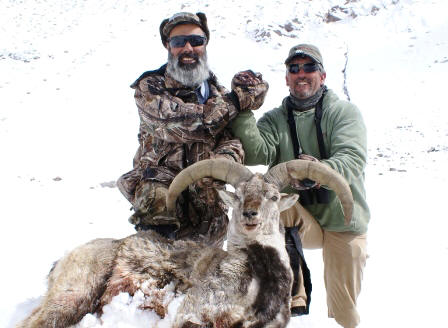 |
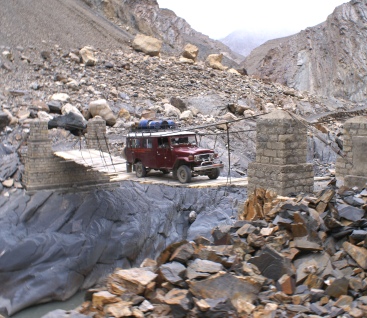 |
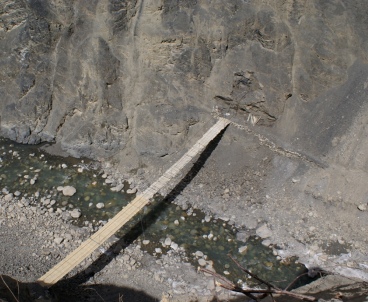 |
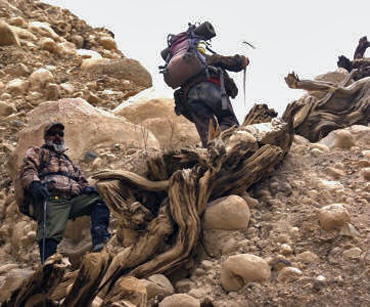 |
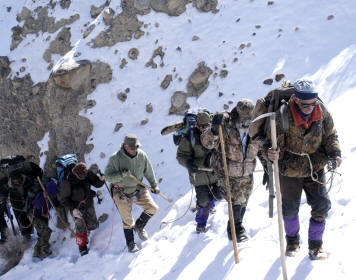 |
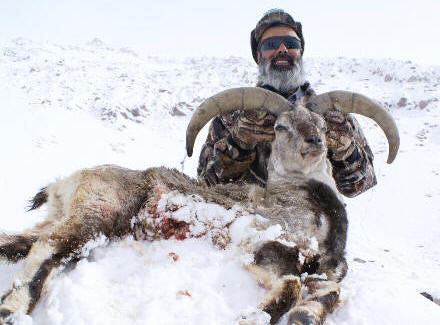 |
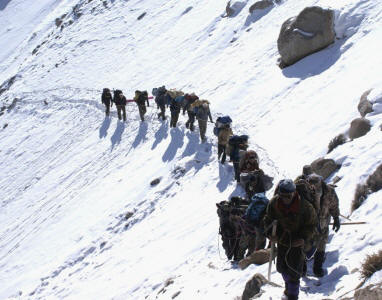 |
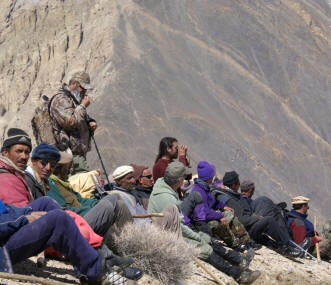 |
|
Since Shimshal is the remotest and
the most isolated region, the criminals sentenced to
rigorous punishment by the rulers of the state used to
be
marooned in
Shimshal
Valley
- only the fittest could survive
and lived here. The descendants, however, are
unbelievably friendly, honest and hospitable. Their
disciplined life and cultured civilization bewitch and
enthrall the visitors (very few) from the outer world.
|
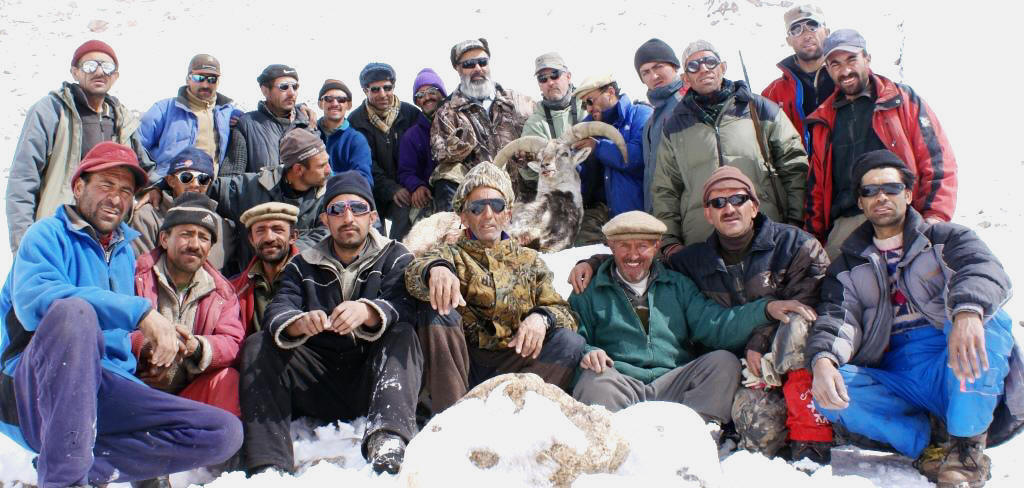 |
|
Geologically, Shimshal reveals, great upheavals in its
natural history. With a unique cluster of the world's
many highest peaks , creeping crevassed glaciers,
massive lackostrine deposits, gigantic scree eroding
mountains, greens meadows, fertile alluvial fans and
stark rigid gorges; Shimshal domains the largest
glaciated region on Earth outside the polar regions. |
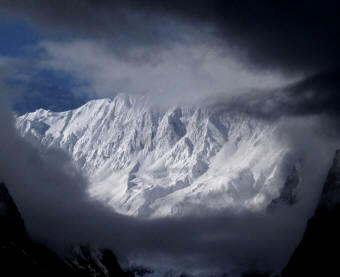 |
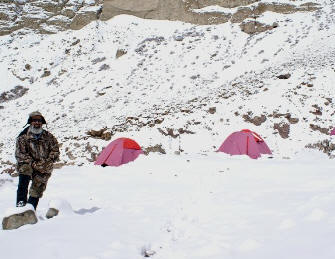 |
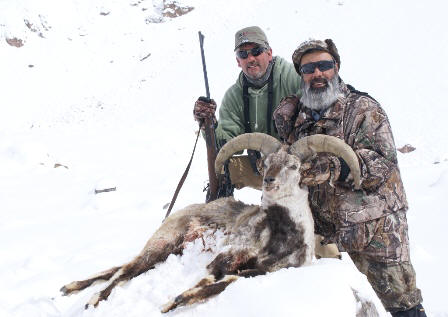 |
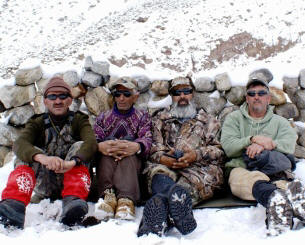 |
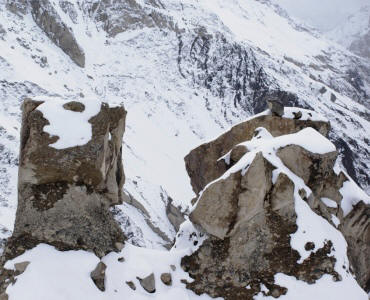 |
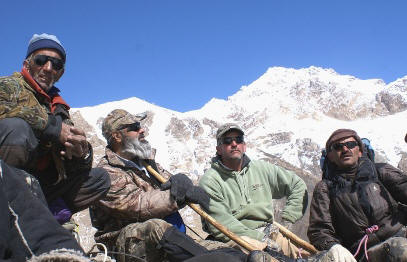 |
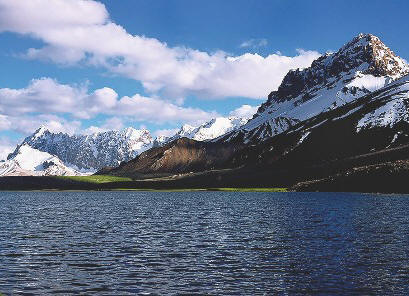 |
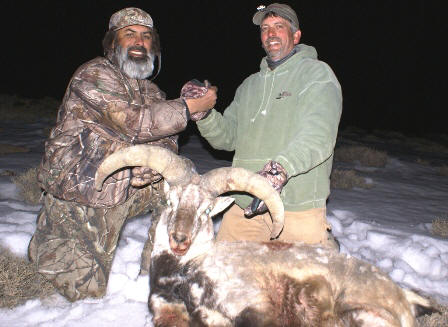 |
|
Shimshal's extreme isolation thus imposed by the
unbelievably steep gorges of the Karakoram, rise to a
long standing, wholly indigenous & pure diet consisting
almost entirely of apricots, wheat and
Hunza Water,
a locally brewed wine, & hence the long living
inhabitants. |
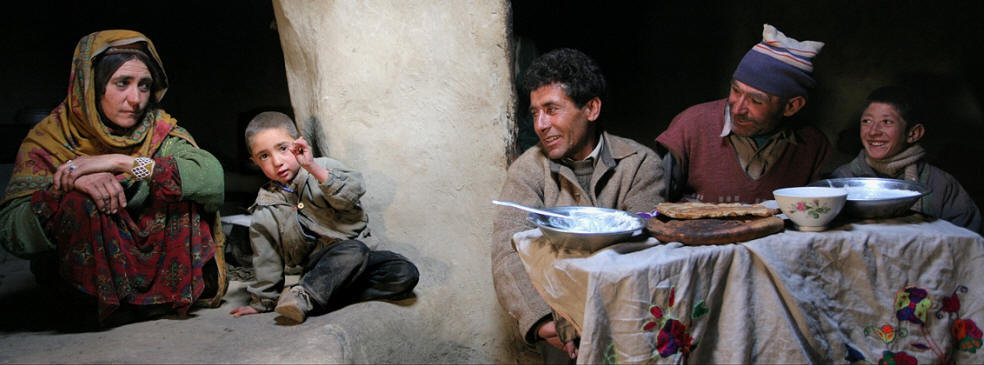 |
|
The society is co-operative rather than competitive. Each family grows
enough food for its own use. As the Shimshalis lived
aloof from the outer world, each citizen was self
sufficient in making his own shoes, clothes & bowls,
until, the perilous jeep track linked them with the
world.
|
 |
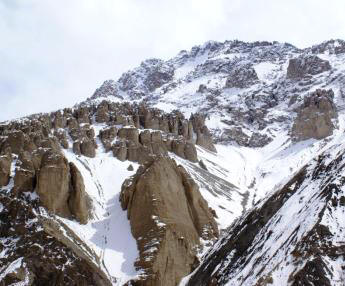 |
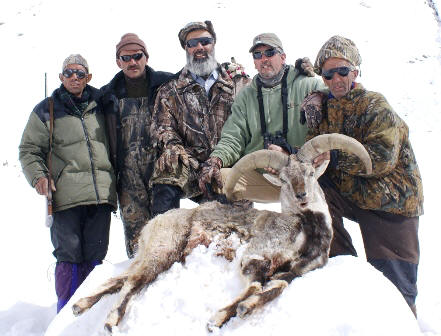 |
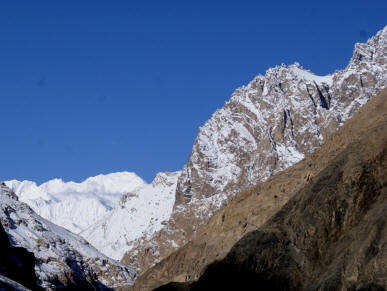 |
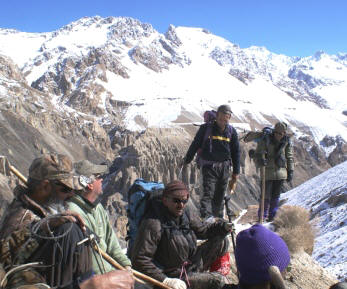 |
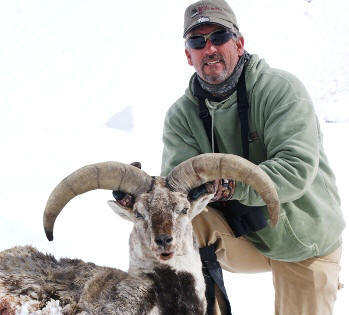 |
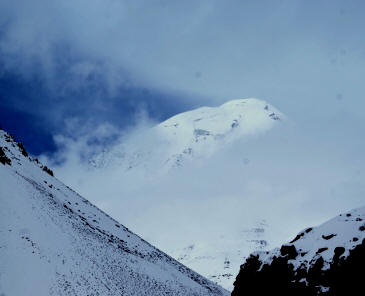 |
 |
|
The walk into and across Shimshal, however, is not a
task to be undertaken lightly. It’s a tough walk up and
down the gorges, across rushing icy torrents, along
steep narrow trails, through broken rocks, over
wire-rope bridges and through many crevassed glaciers. |
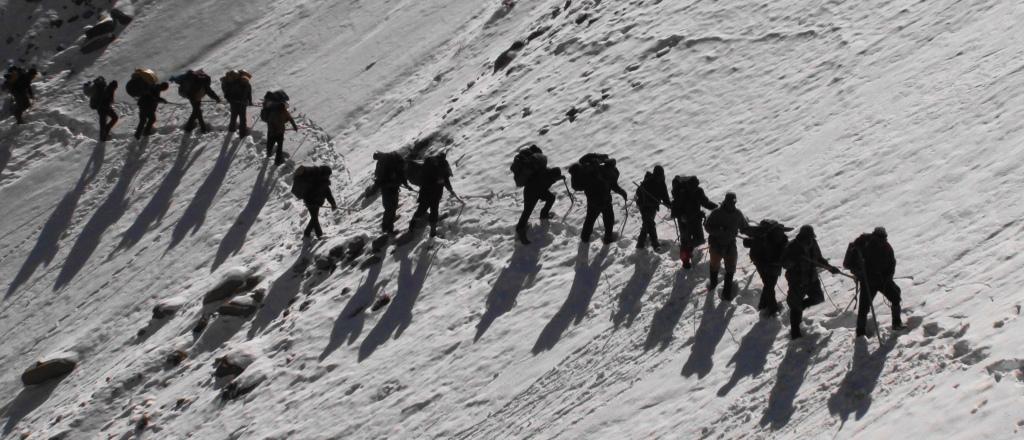 |
|
Shimshal is a farming & herding community of 3000
people, situated at north-eastern extreme of the former
state of Hunza. The settlement occupies the upper
portion of a valley of the same name, which descends
west into the
Hunza River valley at Passu and separates the
Ghujerab and Hispar Mustagh ranges of the Karakoram
mountains. Shimshal is also famous for the
longevity of its people. |
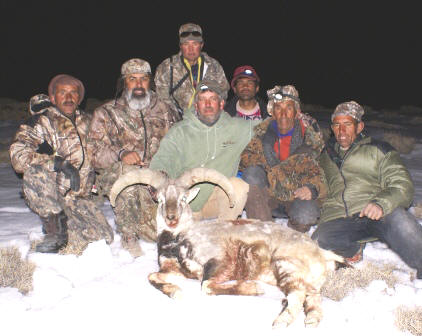 |
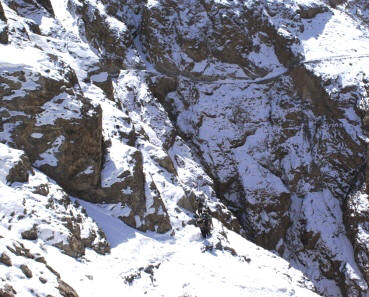 |
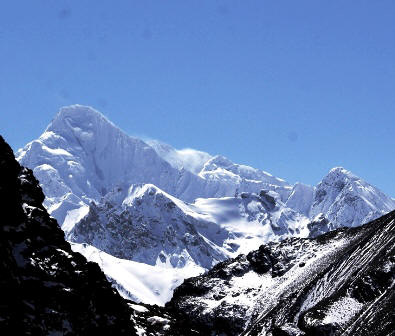 |
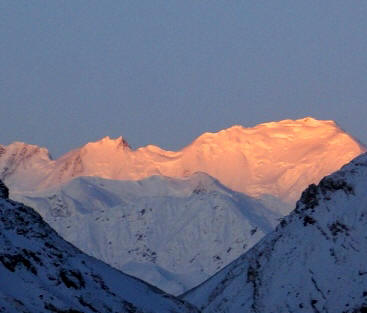 |
 |
 |
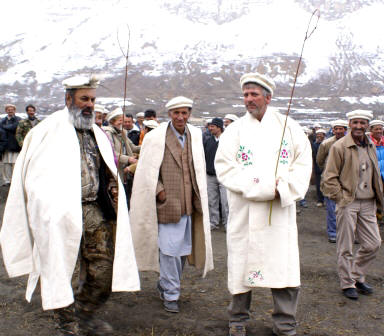 |
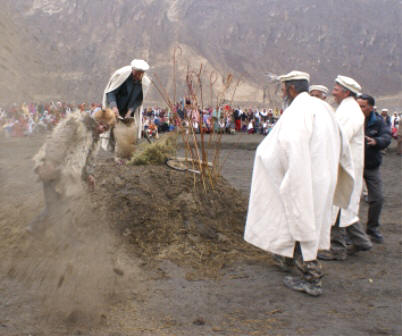 |
|
The people of Shimshal are cheerful & friendly. The
entire population belongs to the Ismaili Shias sect
headed by Prince Karim Agha Khan. The women wear bright
clothes, long shirts over baggy trousers and embroided
pillbox hats over which they drape their shawls,
whereas, men mostly wear simple dress composed of
shalwar (trouser) & kamiz (shirt) or western trousers
with a hand woven wool cap. |
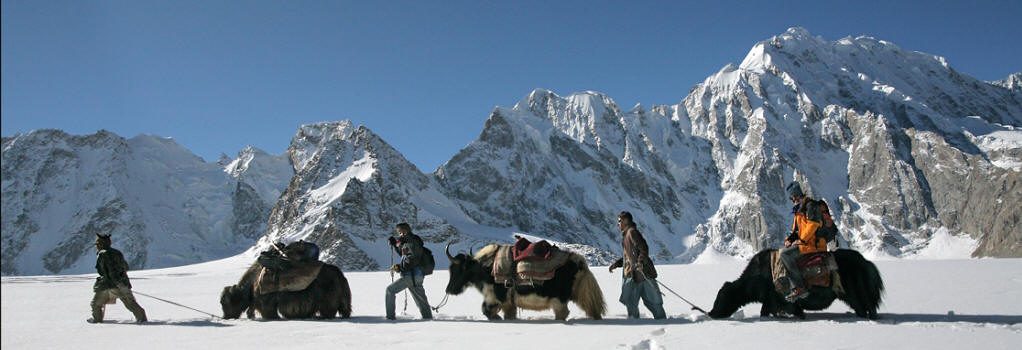 |
|
Shimshal pastures cover about 2700 sq km of the
Central Karakoram. Within that area they
maintain their three dozen individual pastures,
including three large and highly productive alpine
areas. Also within Shimshal territory are innumerable
peaks, glaciers and trekking routes, including nine
peaks above 7,000 meters. Yukshin
Gardan, Yazghil Dome, Dataghil Sar, Malangutti, Karoon
Koh are the famous ones. |
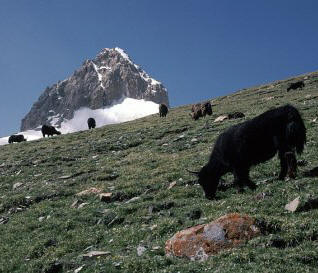 |
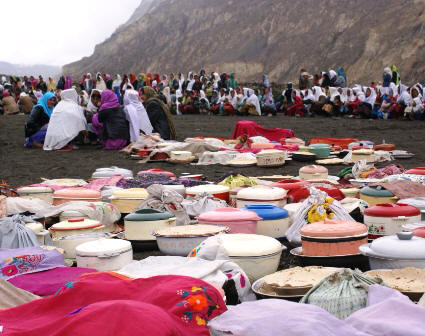 |
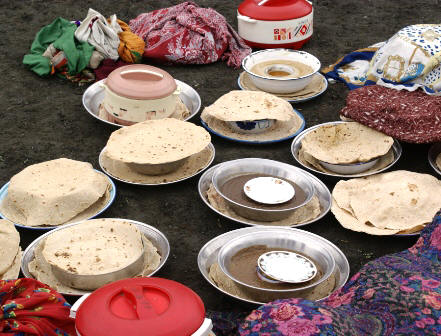 |
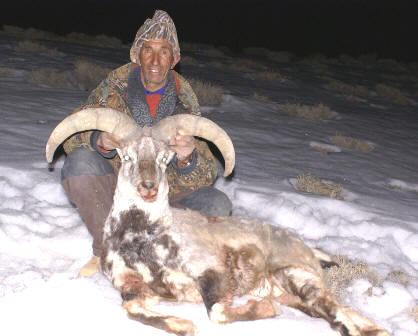 |
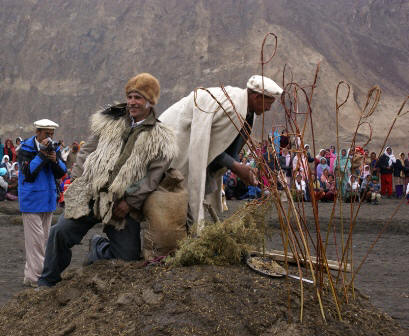 |
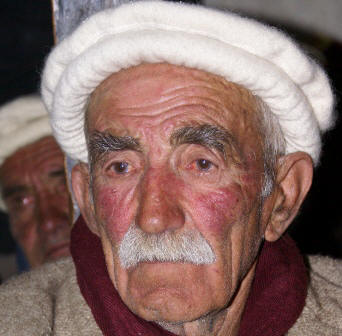 |
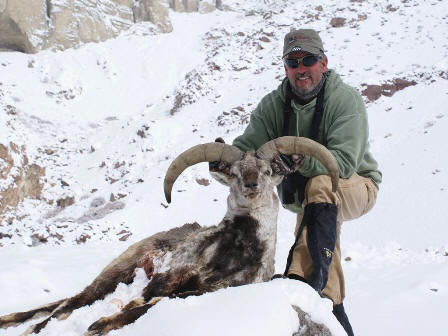 |
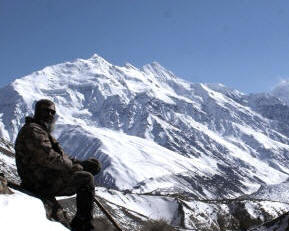 |
|
Shimshal’s villages are situated on a series of glacial
and alluvial deposits that form a broad strip between
the river's floodplain and steep mountain slopes to the
south. These deposits have been terraced for several
hundred years. They are irrigated by glacier melt water
which currently dissect them. Shimshalis
grow wheat & barley, potatoes, peas, beans, apricots and
apples. Small quantities of garden vegetables are also
grown. Shimshalis are one of the few communities in Pakistan's Northern Areas that grows
enough agricultural produce to feed itself.
|
 |
|
Shimshalis complement their irrigated agriculture with
extensive herding of sheep, goats, cattle & yaks. They
own more livestock per capita than any other Hunza
community & earn more by selling dairy produce, yaks and
yak hair carpets. This is due, in part, to the
community's exclusive control of vast areas of high
altitude land. Serving tourists as porters, guides,
drivers & cooks is another source of income. |
 |
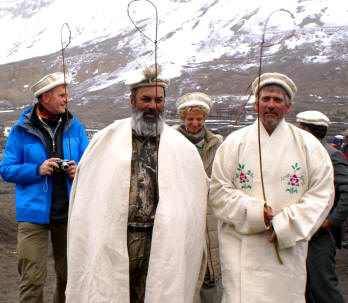 |
 |
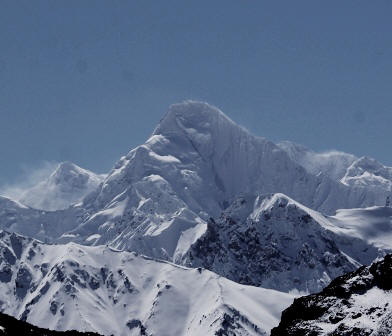 |
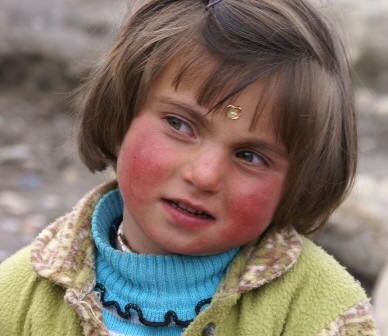 |
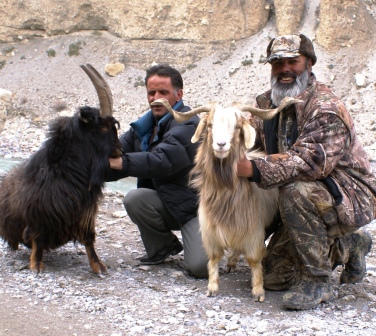 |
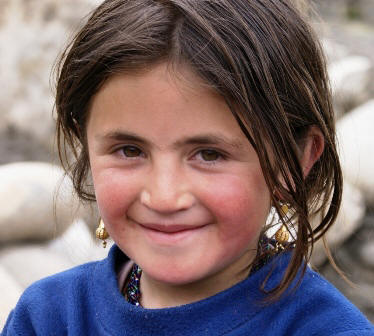 |
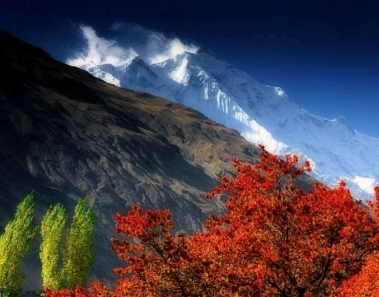 |
|
Shimshal is rich in fauna & many threatened wildlife
species are found here. It is the only place where
Tibetan Wild Ass (Equus bemionus kiang), & Blue
Sheep (Pseudois nayaur) are found. Snow leopard (Uncia
uncia), Himalayan ibex (Capra Ibex Sibirica Hemalayanus) and,
Golden Marmots (Marmota caudate) are also found
in Shimshal. Migratory birds like ducks & cranes also
enroute Shimshal Valley. |
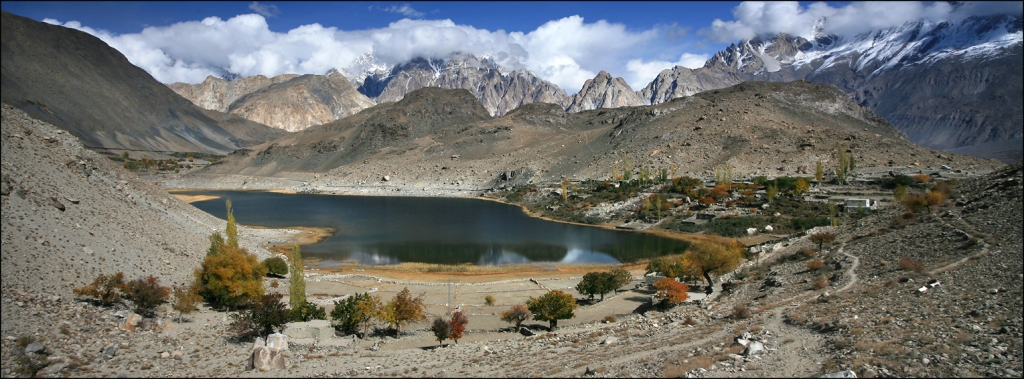 |
|
As per many popular tales of community, Shimshal was
founded four centuries ago by Mamu Singh, a Burusho from
Baltit (Hunza), and a member of the ruler's family. Mamu
Singh was sent to Sarikol, Central
Asia, as ambassador, but later fled with his
Wakhi wife Khodija, when relations with Hunza
deteriorated. They were pursued into the
Upper
Hunza River
Valley, as far as Avgarch Pasture on
the slopes of Qarun Pir, where they made their home for
several years before migrating into the lower reaches of
the Shimshal Valley. |
|
|
|
|